
Gina Garan
Location: New York City
How would you describe your art: A true reflection of myself and the person I aspire to be.
Currently working on: Having my first baby!! And, still shooting Blythe at least once a week.
Day job: Video producer.
3 Likes: Tapioca pearl tea (total addict), my twice or thrice yearly trips to Tokyo, dolls from the 60's and 70's
3 Dislikes: Mean people, prejudice of any kind
Daily Inspirations: My husband, my city, my doll collection (over 2000 and counting!)
People & artists you admire: Cindy Sherman, Trevor Brown, Paul Court, Mark Ryden
Superpower you would most like to possess: I wouldn't mind flying
http://www.thisisblythe.com/
- - -
This interview took place at the beginning of January 2005. All images reproduced with permission © Gina Garan
- - -
Hi Gina, how are you? What are you up to at the moment?
Hello!! Right now I’m getting ready to give birth to my son. He’s due in less than two weeks and wow, am I nervous! I'm trying to figure out how NOT to overwhelm him with dolls the minute he's out of the gate!
Artistically, you are most well known for your photography, and in particular, your photographs of the doll, Blythe. How did you first get into photography, and then Blythe photography?
The truth is, the first photo I took of Blythe was a complete fluke. I’d found an old camera in an apartment I had just moved into. It looked like it was in working condition so I thought I’d take it for a test. Because it had a macro lens, I needed a small object for my experiment. I had a large collection of Blythe dolls at the time and decided she'd be the perfect model. I was so pleased with the results that I continued to shoot her. Before she became my model I photographed some local bands in NYC but have since dropped that and have focused solely on dolls.
What particular photographic equipment do you use? Is the choice of camera important to you, or do you feel that any equipment could be used in your art?
I use an old Nikon FE. I’ve tried other cameras, including a high-end digital, but cannot seem to get the same results I get with my Nikon. There are LOADS of other Blythe photographers now - they use everything from digital to Polaroid and all have gotten really interesting and good results. It’s really just a matter of personal taste.
The thing that always strikes me in your photographs is not just Blythe, but the locations and landscapes in which you photograph her. Are the locations as inspiring to you as Blythe, as a subject, is?
Shooting Blythe is, for me, a pretty organic procedure. I take into account the place we're travelling to and dress her accordingly. She favours punk and/or Japanese street clothes so that's always my default. I’m lucky enough to have a pretty big fan base which is comprised of the most talented bunch of people on the planet. I get homemade clothing from around the world on a daily basis. To date, I’d guess that Blythe has over 5,000 outfits. She’s a lucky girl! Very often, the outfits I receive inspire me to find the perfect location instead of the opposite being true.
You have said that you take Blythe everywhere with you, which, I guess, is how you manage to photograph Blythe in so many different locations and scenarios. Does taking Blythe everywhere with you allow you to embrace the opportunities and spontaneity of art?
Absolutely. There are weeks at a time that though I have Blythe and my camera with me that I don't take a single shot. I just don't get inspired. Other times, I’ll snap off 5 rolls at once in a place that might not be necessarily known for its interesting locale. Early on I would kick myself for not bringing her along wherever I go - I’ve learned my lesson now and can guarantee that if you run into my on the street, Blythe will not be far behind.
Are a lot of your photo shoots taken quickly, on-the-hoof while travelling, requiring quick set ups to capture the moment? How do these shots differ, in your appreciation of them, from photo shoots that have taken you longer to prepare and set up? Of these, is there a particular way in which you most enjoy working?
I almost never set up my shots. 99.9% of them are taken 'on-the-fly'. As a matter of fact, up until very recently, I didn't even own a flash, as I much prefer the spontaneity of pulling Blythe out of my bag ambush style and moving on. Having to deal w/ light meters and other equipment is just too much of a burden. Also, I try not to use props as they tend to look like toys rather than small-scale replicas (except if the case of the ouija board in my book - that looks GREAT!) - so, I’m careful with whatever is going on in the background. I want to keep the illusion of Blythe living in a human sized world. I use a macro lens, so the background is very often thrown out of focus. This makes it easy to 'fool' my audience. I shoot Blythe so often that I can easily suss out a situation when I’m shooting. Sometimes I’ll come across a really great location but will go home without shooting anything in order to keep the integrity of her surroundings. It’s quite frustrating!
Were your initial photographs, before you showed them to Junko Wong [Gina’s agent], just for fun and for yourself, or did you always intend to exhibit them?
They were definitely just for myself. The only time I ‘exhibited’ them was when my friends came over. Showing them to the world-at-large never crossed my mind.
I read somewhere that before your ‘This Is Blythe’ book of photographs was published, you lacked any publishing experience, but still you ‘naively’ approached publishers with your ideas. What drove you to pursue a field in which you had little knowledge and experience? Was it a difficult process? Is it something you would recommend/encourage other people to do: step into non-experienced fields of work, and art?
I’ve always said that getting my first book deal was the fluke of the century!! A few of my friends became smitten with Blythe and suggested trying to get a book of my photos published. I was home sick one day and on a whim sent out 5 letters to 5 different publishers. The letters were naively cringe-worthy: "dear sirs, I would like to do a book about my doll. Love, Gina' - I attached a few photos and soon forgot about it. To my surprise, I got contacted by all five publishers! I remember telling my friends 'oh, it's really easy getting a book deal - they'll buy anything!!' - it took me a while to realise that I just happened to get lucky - VERY lucky as a matter of fact. So, I took baby steps with my editor at Chronicle and learned the ins and outs of the publishing world. The process was eye-opening for sure. In regards to your question about whether or not I would recommend this process to others, my answer is YES YES YES!! It started an entirely new business and lifestyle for me. It’s enhanced my life so much. It’s testament that if you believe in something enough, you can really make it work for you.
In your experience, how does displaying your photographs at galleries and exhibitions differ from exhibiting photographs in a published book format? Is there either of these that you feel most comfortable with? Do you see either form of exhibition as more ‘public’ that the other?
There’s not much of a difference to me. It’s fun to see my work in a gallery because I’m then able to see the way
people respond.
In the introduction to ‘This is Blythe’, you state that ‘Just as she [Blythe] is my Muse, she is also my obsession’. The notion of a Muse is very interesting to me. In ‘Meeting The Madwoman’, Linda Schierse Leonard claims:
‘Being a Muse is appealing because it has been an acceptable role and feminine ideal for women in our culture throughout the ages. At the archetypal level, as the ‘eternal feminine’, the Muse inspires the spirit and leads the soul on its creative journey, as Beatrice did for Dante. To inspire means to breathe life into, to ignite the creative fire. Women in touch with the Muse energy tend to be mysterious and spiritual; their inspiration comes from love.’ […] In a commercial society ruled by greed for money, fame, success and power, the Muse can be reduced to an external means for gain and thus abused, as in the misinterpretation of the Muse as glamour or sex object. […] Outwardly, the Muse may be beautiful and brilliant, charming and gracious, bewitching and beguiling, sweet and demure. Despite her alluring mystique […] she becomes co-dependent, addicted to a dysfunctional existence in which she is cut off from her own centre of creativity.’
Does this statement (in the first paragraph above) ring true for you, in terms of the way Blythe comes to act as a creative force and inspiration for you, and for your art? Do you see your representations of Blythe as making her fulfil ‘acceptable feminine ideals’ that you could be ‘abusing’ commercially?
This is a loaded question that I have to think about....
David La Chapelle has described your artwork as ‘hypnotic photography’ that ‘seduce[s] the eyes to orgasmic highs’.
Do you feel it is your subject matter, or your methods of photographing your subject (incorporating lighting, closeness, backgrounds, colour filtering) that contributes to this experience of ‘seduction’ and ‘hypnosis’?
It’s a combination of both. I’ve tried to get the same feel with other dolls and have not been able to do so. There’s something quite magical about Blythe.
Is taking the audience to a ‘hypnotic’/another-worldly place (perhaps a place evoking childhood fantasy and imagination) a conscious aim in your art? How important do you feel the place of ‘imagination’ is in art?
I love hearing that people are taken somewhere else when they look at my photos. I hear this a lot, and honestly, it's one of the greatest compliments. Who doesn't want to escape the world for a minute and enter a fantasyland ruled by a doll?
It’s part of why I started shooting Blythe in the first place. I’ve often referred to her as my doppelganger - a mini version of myself who is outspoken, not afraid of anything and self-assured. I get mail from girls and guys who say they’re terrible shy and are able to live out their fantasy worlds through the photos they take themselves. I understand this completely.
In a review I read of ‘This is Blythe’, it stated: ‘Gina dresses Blythe and places her in “to scale” dioramas, calling on the viewer to relate to Blythe as a person, imbuing her with emotion, personality, and character. There is also an undertone of secrecy and withdrawal in these cryptic images, that eludes to a vulnerability that seduces the viewer into relation’
Were these the conscious, intended emotional responses you wanted viewers to reach when they viewed the Blythe characters thru your art?
This is true in some cases. I like to show her ironic tongue-in-cheek side. Very often there is hidden meaning in a particular photo that is best discovered by the viewer rather that in a more blatant way.
Is this how you see Blythe when you look at / work with her: as a doll with emotion, a doll you can relate to? Is she a portal with which you can relate to others also?
As I mentioned above, she is my doppelganger - a true extension of myself. She is my companion, travel partner and best friend.
A reviewer, Sienna Powers, said of your work, in 2000 that: Garan brings us fashion shoots worthy of Elle […] The photos are very good, if not excellent and the styling is flawless. But is it art? In response to this, how would you define ‘art’, and your place in the field of ‘art’?
To be honest with you, I didn't start shooting Blythe with the intention of attracting the art world. It was a hobby that I just loved and did for myself. When my book started getting attention, I panicked and thought 'someone will surely find out that I’m a fraud'. But, that notion soon melted away when I realized that all I did was share something that was near and dear and very personal to me. If I’m accepted in any art circles it's just icing on the cake.
Location: New York City
How would you describe your art: A true reflection of myself and the person I aspire to be.
Currently working on: Having my first baby!! And, still shooting Blythe at least once a week.
Day job: Video producer.
3 Likes: Tapioca pearl tea (total addict), my twice or thrice yearly trips to Tokyo, dolls from the 60's and 70's
3 Dislikes: Mean people, prejudice of any kind
Daily Inspirations: My husband, my city, my doll collection (over 2000 and counting!)
People & artists you admire: Cindy Sherman, Trevor Brown, Paul Court, Mark Ryden
Superpower you would most like to possess: I wouldn't mind flying
http://www.thisisblythe.com/
- - -
This interview took place at the beginning of January 2005. All images reproduced with permission © Gina Garan
- - -
Hi Gina, how are you? What are you up to at the moment?
Hello!! Right now I’m getting ready to give birth to my son. He’s due in less than two weeks and wow, am I nervous! I'm trying to figure out how NOT to overwhelm him with dolls the minute he's out of the gate!
Artistically, you are most well known for your photography, and in particular, your photographs of the doll, Blythe. How did you first get into photography, and then Blythe photography?
The truth is, the first photo I took of Blythe was a complete fluke. I’d found an old camera in an apartment I had just moved into. It looked like it was in working condition so I thought I’d take it for a test. Because it had a macro lens, I needed a small object for my experiment. I had a large collection of Blythe dolls at the time and decided she'd be the perfect model. I was so pleased with the results that I continued to shoot her. Before she became my model I photographed some local bands in NYC but have since dropped that and have focused solely on dolls.
What particular photographic equipment do you use? Is the choice of camera important to you, or do you feel that any equipment could be used in your art?
I use an old Nikon FE. I’ve tried other cameras, including a high-end digital, but cannot seem to get the same results I get with my Nikon. There are LOADS of other Blythe photographers now - they use everything from digital to Polaroid and all have gotten really interesting and good results. It’s really just a matter of personal taste.
The thing that always strikes me in your photographs is not just Blythe, but the locations and landscapes in which you photograph her. Are the locations as inspiring to you as Blythe, as a subject, is?
Shooting Blythe is, for me, a pretty organic procedure. I take into account the place we're travelling to and dress her accordingly. She favours punk and/or Japanese street clothes so that's always my default. I’m lucky enough to have a pretty big fan base which is comprised of the most talented bunch of people on the planet. I get homemade clothing from around the world on a daily basis. To date, I’d guess that Blythe has over 5,000 outfits. She’s a lucky girl! Very often, the outfits I receive inspire me to find the perfect location instead of the opposite being true.
You have said that you take Blythe everywhere with you, which, I guess, is how you manage to photograph Blythe in so many different locations and scenarios. Does taking Blythe everywhere with you allow you to embrace the opportunities and spontaneity of art?
Absolutely. There are weeks at a time that though I have Blythe and my camera with me that I don't take a single shot. I just don't get inspired. Other times, I’ll snap off 5 rolls at once in a place that might not be necessarily known for its interesting locale. Early on I would kick myself for not bringing her along wherever I go - I’ve learned my lesson now and can guarantee that if you run into my on the street, Blythe will not be far behind.
Are a lot of your photo shoots taken quickly, on-the-hoof while travelling, requiring quick set ups to capture the moment? How do these shots differ, in your appreciation of them, from photo shoots that have taken you longer to prepare and set up? Of these, is there a particular way in which you most enjoy working?
I almost never set up my shots. 99.9% of them are taken 'on-the-fly'. As a matter of fact, up until very recently, I didn't even own a flash, as I much prefer the spontaneity of pulling Blythe out of my bag ambush style and moving on. Having to deal w/ light meters and other equipment is just too much of a burden. Also, I try not to use props as they tend to look like toys rather than small-scale replicas (except if the case of the ouija board in my book - that looks GREAT!) - so, I’m careful with whatever is going on in the background. I want to keep the illusion of Blythe living in a human sized world. I use a macro lens, so the background is very often thrown out of focus. This makes it easy to 'fool' my audience. I shoot Blythe so often that I can easily suss out a situation when I’m shooting. Sometimes I’ll come across a really great location but will go home without shooting anything in order to keep the integrity of her surroundings. It’s quite frustrating!
Were your initial photographs, before you showed them to Junko Wong [Gina’s agent], just for fun and for yourself, or did you always intend to exhibit them?
They were definitely just for myself. The only time I ‘exhibited’ them was when my friends came over. Showing them to the world-at-large never crossed my mind.
I read somewhere that before your ‘This Is Blythe’ book of photographs was published, you lacked any publishing experience, but still you ‘naively’ approached publishers with your ideas. What drove you to pursue a field in which you had little knowledge and experience? Was it a difficult process? Is it something you would recommend/encourage other people to do: step into non-experienced fields of work, and art?
I’ve always said that getting my first book deal was the fluke of the century!! A few of my friends became smitten with Blythe and suggested trying to get a book of my photos published. I was home sick one day and on a whim sent out 5 letters to 5 different publishers. The letters were naively cringe-worthy: "dear sirs, I would like to do a book about my doll. Love, Gina' - I attached a few photos and soon forgot about it. To my surprise, I got contacted by all five publishers! I remember telling my friends 'oh, it's really easy getting a book deal - they'll buy anything!!' - it took me a while to realise that I just happened to get lucky - VERY lucky as a matter of fact. So, I took baby steps with my editor at Chronicle and learned the ins and outs of the publishing world. The process was eye-opening for sure. In regards to your question about whether or not I would recommend this process to others, my answer is YES YES YES!! It started an entirely new business and lifestyle for me. It’s enhanced my life so much. It’s testament that if you believe in something enough, you can really make it work for you.
In your experience, how does displaying your photographs at galleries and exhibitions differ from exhibiting photographs in a published book format? Is there either of these that you feel most comfortable with? Do you see either form of exhibition as more ‘public’ that the other?
There’s not much of a difference to me. It’s fun to see my work in a gallery because I’m then able to see the way
people respond.
In the introduction to ‘This is Blythe’, you state that ‘Just as she [Blythe] is my Muse, she is also my obsession’. The notion of a Muse is very interesting to me. In ‘Meeting The Madwoman’, Linda Schierse Leonard claims:
‘Being a Muse is appealing because it has been an acceptable role and feminine ideal for women in our culture throughout the ages. At the archetypal level, as the ‘eternal feminine’, the Muse inspires the spirit and leads the soul on its creative journey, as Beatrice did for Dante. To inspire means to breathe life into, to ignite the creative fire. Women in touch with the Muse energy tend to be mysterious and spiritual; their inspiration comes from love.’ […] In a commercial society ruled by greed for money, fame, success and power, the Muse can be reduced to an external means for gain and thus abused, as in the misinterpretation of the Muse as glamour or sex object. […] Outwardly, the Muse may be beautiful and brilliant, charming and gracious, bewitching and beguiling, sweet and demure. Despite her alluring mystique […] she becomes co-dependent, addicted to a dysfunctional existence in which she is cut off from her own centre of creativity.’
Does this statement (in the first paragraph above) ring true for you, in terms of the way Blythe comes to act as a creative force and inspiration for you, and for your art? Do you see your representations of Blythe as making her fulfil ‘acceptable feminine ideals’ that you could be ‘abusing’ commercially?
This is a loaded question that I have to think about....
David La Chapelle has described your artwork as ‘hypnotic photography’ that ‘seduce[s] the eyes to orgasmic highs’.
Do you feel it is your subject matter, or your methods of photographing your subject (incorporating lighting, closeness, backgrounds, colour filtering) that contributes to this experience of ‘seduction’ and ‘hypnosis’?
It’s a combination of both. I’ve tried to get the same feel with other dolls and have not been able to do so. There’s something quite magical about Blythe.
Is taking the audience to a ‘hypnotic’/another-worldly place (perhaps a place evoking childhood fantasy and imagination) a conscious aim in your art? How important do you feel the place of ‘imagination’ is in art?
I love hearing that people are taken somewhere else when they look at my photos. I hear this a lot, and honestly, it's one of the greatest compliments. Who doesn't want to escape the world for a minute and enter a fantasyland ruled by a doll?
It’s part of why I started shooting Blythe in the first place. I’ve often referred to her as my doppelganger - a mini version of myself who is outspoken, not afraid of anything and self-assured. I get mail from girls and guys who say they’re terrible shy and are able to live out their fantasy worlds through the photos they take themselves. I understand this completely.
In a review I read of ‘This is Blythe’, it stated: ‘Gina dresses Blythe and places her in “to scale” dioramas, calling on the viewer to relate to Blythe as a person, imbuing her with emotion, personality, and character. There is also an undertone of secrecy and withdrawal in these cryptic images, that eludes to a vulnerability that seduces the viewer into relation’
Were these the conscious, intended emotional responses you wanted viewers to reach when they viewed the Blythe characters thru your art?
This is true in some cases. I like to show her ironic tongue-in-cheek side. Very often there is hidden meaning in a particular photo that is best discovered by the viewer rather that in a more blatant way.
Is this how you see Blythe when you look at / work with her: as a doll with emotion, a doll you can relate to? Is she a portal with which you can relate to others also?
As I mentioned above, she is my doppelganger - a true extension of myself. She is my companion, travel partner and best friend.
A reviewer, Sienna Powers, said of your work, in 2000 that: Garan brings us fashion shoots worthy of Elle […] The photos are very good, if not excellent and the styling is flawless. But is it art? In response to this, how would you define ‘art’, and your place in the field of ‘art’?
To be honest with you, I didn't start shooting Blythe with the intention of attracting the art world. It was a hobby that I just loved and did for myself. When my book started getting attention, I panicked and thought 'someone will surely find out that I’m a fraud'. But, that notion soon melted away when I realized that all I did was share something that was near and dear and very personal to me. If I’m accepted in any art circles it's just icing on the cake.
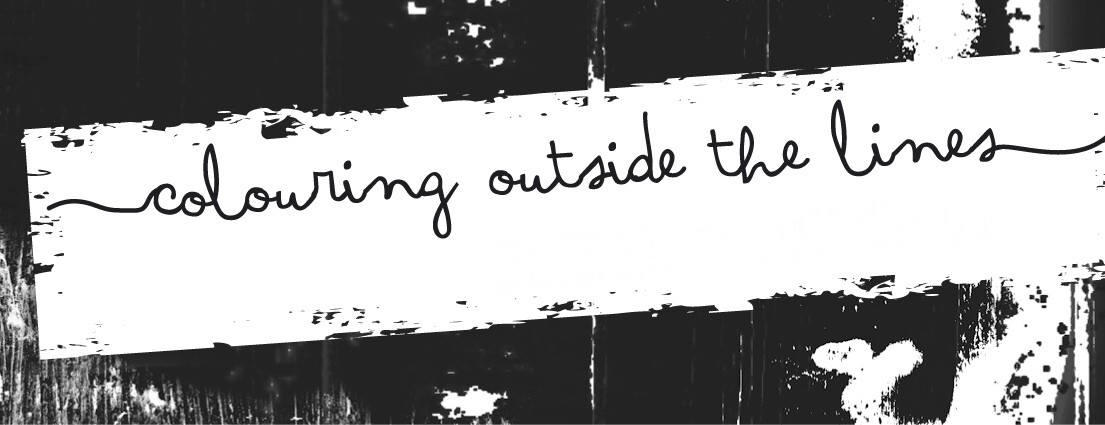





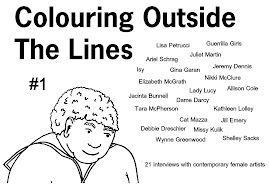
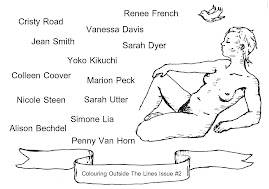

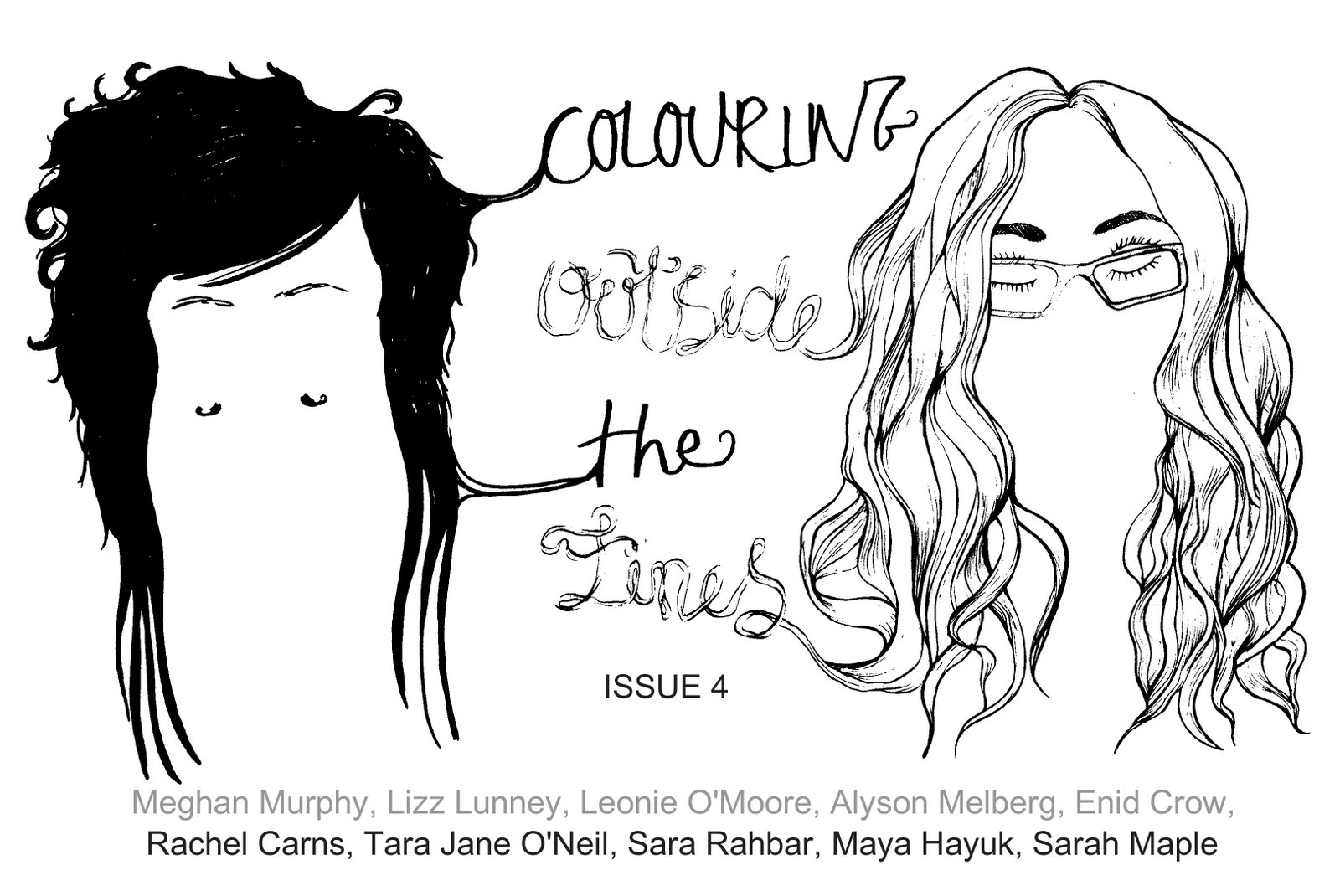

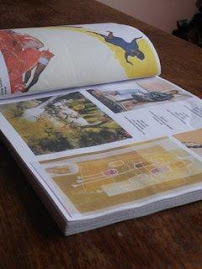



No comments:
Post a Comment